The Top 10 Fitness Hacks of Olympians
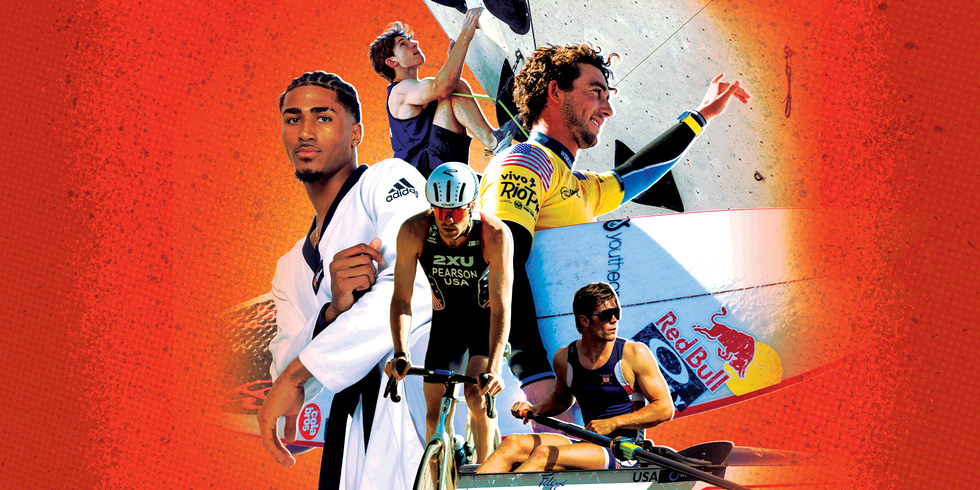
Sexual Health
FEW ATHLETES UNDERSTAND how to train for speed better than the world’s best sprinters, and few understand jumping better than elite basketball players. But when the Olympics kick off in Paris this July, you’ll have a chance to see more than those athletic basics. The athletes from a handful of lesser-known Olympic sports (surfing, tae kwon do, sport climbing, triathlon, and rowing) have mastered ultra-specialized skills to reach the pinnacle of their professions. Learning their lessons can propel you forward in everyday life—and help you crush your fitness goals, too.
Improve Rotational Power
Tae Kwon Do Athlete CJ Nickolas
TAE KWON DO requires agility, grace, speed, and power. You’re part ballet dancer, part assassin. CJ Nickolas started at age three. Now 22, the six-foot-two athlete says he relies on his jumps and spin moves, since the competitors in his weight category (176 pounds) are typically at least six-foot-four. “There’s a lot of physical downward force—people coming downhill on me because I’m smaller, so they can put all their weight on me,” Nickolas says.
Punch Up Your Core
Nickolas’s key drill: Stand with your back to a cable crossover machine, a cable handle held in your right hand at your shoulder, elbow bent. Explosively punch forward, rotating your hips as you do. Return to the start. Do 2 sets of 8 to 10 reps per side. No cable machine? Use a resistance band.
Hold for Strength and Stamina
Sometimes the simplest moves are the most effective. Take leg holds, which have you holding your knee above hip height. This builds up the hip flexors and hones balance. You’ll develop underrated glute strength, too. “We’ll hold it there for a good 10 to 20 seconds, then switch legs,” Nickolas says. “Go back and forth for 20 seconds.”
Boost Cardio Capacity
Rower Justin Best
TEAM USA ROWER Justin Best makes powering a boat through water look effortless. It’s not. Rowing demands intense cardio capacity and can put vertebrae-bending pressure on your spine. The 26-year-old Best and the other three work horses in the four-person boat have VO2 max scores in the 65-to-75 ml range. Best has also learned to deal with a rowing-induced back injury. In 2022, he ended up with bulging L4 and L5 discs.“What’s helpful is working on flexibility, so you can be in a compressed position comfortably and have a stronger core.”
Work in Intervals
One of Best’s favorite workouts is simple: eight 500-meter rows on a Concept2 rower, with 2 minutes of rest between them.“The goal of the workout is to find your pace and repeat multiple times,” he says. Be warned: This is not easy. Best’s 500-meter pace is 1:26.8, but 1:45 is considered fast for civilians. Monitor your stroke rate, he says, aiming for 32 to 36 strokes per minute.
Safeguard Your Spine
To protect his spine, Best does more than planks for his core. He says he performs “dynamic movements to stimulate the abs, low back, and obliques.” Try plank drags to do this: Start in plank position, a kettlebell just outside your right hand. Reach across with your left hand and drag it just outside your left arm. Repeat on the other side; do 2 or 3 sets of 8 to 10 reps.
Forge Explosive Strength
Sport climber Colin Duffy
YOU DON’T REALIZE how important grip strength is until you’re falling, whether that’s down some stairs or off a cliff. This second scenario is the one that sport climber Colin Duffy faces. The five-foot-seven, 145-pound 20-year-old excels in dynos, explosive moves that have you completely leaping off the climbing wall and reaching for a higher hold. Fully grabbing that hold will max out your grip.
Build Grip Strength
You use your arms and legs to navigate the wall, but most of the weight is in your hands and fingers, says Duffy. “So you need to be able to grab really tiny climbing holds and be able to support yourself on any type of grip.” Duffy climbs 2 to 3 hours most days.
He also uses pinch blocks—small, thick pieces of wood with an attachment that can take a weight plate. Hang a 5-or-10 pound plate from the pinch block and stand holding the block; aim to hold for 30 seconds. Do 3 sets per hand. If that’s too difficult, you can hang on a bar to build grip strength. Aim for 30 seconds to start and build up to 1 minute.
Boost Your Launch Power
To fuel those dynos, Duffy does box jumps and muscle-ups—a combination that gives him the next-level ability to push and pull very fast and hard. Can’t do muscle-ups? Master uneven-grip pull ups first: Do 2 sets of 6 to 8 reps per side with 1 hand overhand, 1 hand underhand.
Fine Tune Your Balance
Surfer Griffin Colapinto
TO WIN OLYMPIC gold, 25-year-old Griffin Colapinto will have to carve turns in the breaks of Teahupo’o in Tahiti, French Polynesia. His prep has focused on strength and balance, with Pilates to stay limber and swimming to rev his cardio. “Balance is everything in surfing,” Colapinto says. “Especially in Tahiti at Teahu-po’o. It’s such a scary wave.” Balance helps him launch and land his signature 360 degree aerial spin—and it starts with his feet.
Beef Up Your Feet
“You need a lot of strength in your feet, since you have to grip the board with your toes,” Colapinto says. Try tip toe squats: Start standing, then lower into a squat. With your thighs parallel to the floor, shift on to your tiptoes, then lower and return to the start. Do 3 sets, working for 30 seconds per set.
Step Down to Level Up
Colapinto noticed that his front (left) leg felt more balanced on the board than his back leg did, so he started emphasizing back-leg balance. To train both legs equally, he performs single-leg depth jumps. Stand on a box 1 or 2 feet high, balancing only on your right foot, then jump off and land on that foot. Do 3 sets of 3 or 4 reps per side twice a week.
Max Out Your Potential
Triathlete Morgan Pearson
SINCE THE MOST recent Olympics, where he won silver in the mixed-relay triathlon, 30-year-old Morgan Pearson has made changes to eke out further gains.He spends more time working on his mobility and strength, and he’s amped up his cardio training. “Before Tokyo, I was doing 15- to 16-mile-long runs,” Pearson says.“ Now I do 17-to-18-mile-long runs that include intervals.” He also pays attention to his sleep hygiene and heart-rate variability (a proxy measure of stress on your body). And he often sleeps in an altitude tent to help improve his cardio. Pearson’s mobility and mental tweaks can benefit anyone.
Swing Your Hips
Pearson recommends hurdle drills for honing hip mobility. Stand facing a hurdle or railing. Lift your right leg as high as possible and rotate it out to the right and over the hurdle. Reverse the movement. Do 2 sets of 8 to 10 reps per side.
Be Intentional About Intensity
Pearson trains in multiple disciplines and strategically organizes his training to optimize each one using a weekly schedule. He gets in his most serious run early in the week (Tuesday) and bikes later, since fatigue won’t decimate his form. Plan your training similarly, doing difficult sessions when you have the most energy. Focus on form over intensity on other days.
A version of this story appeared in the July/August 2024 issue of Men’s Health.

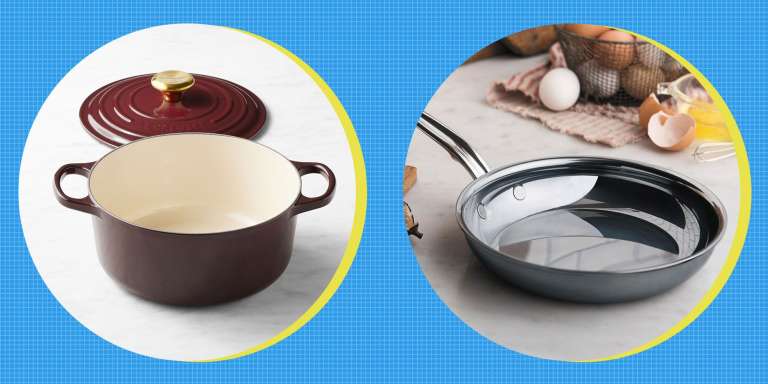
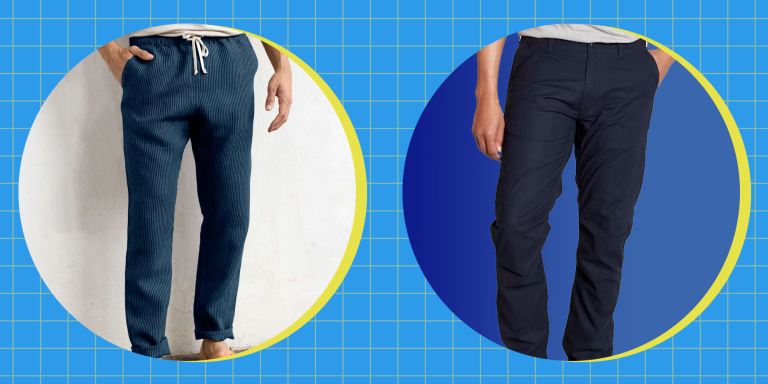
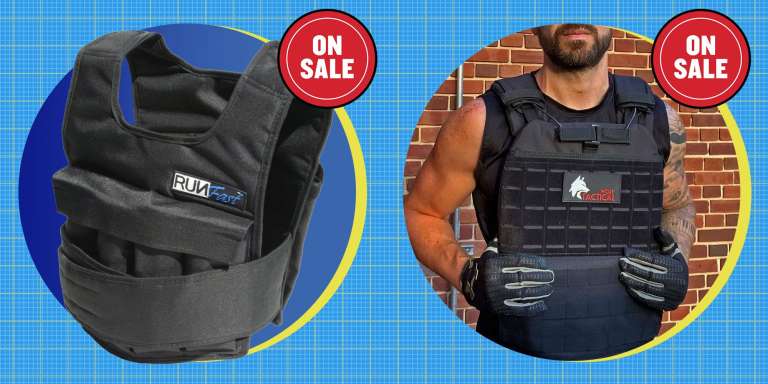


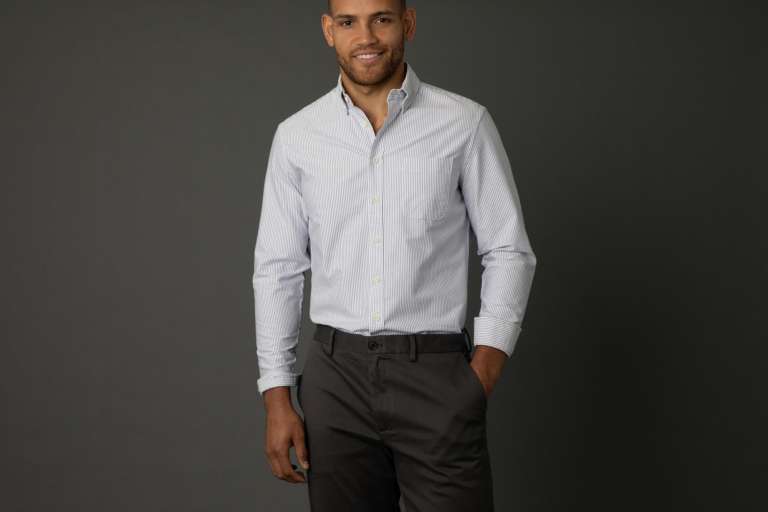


+ There are no comments
Add yours